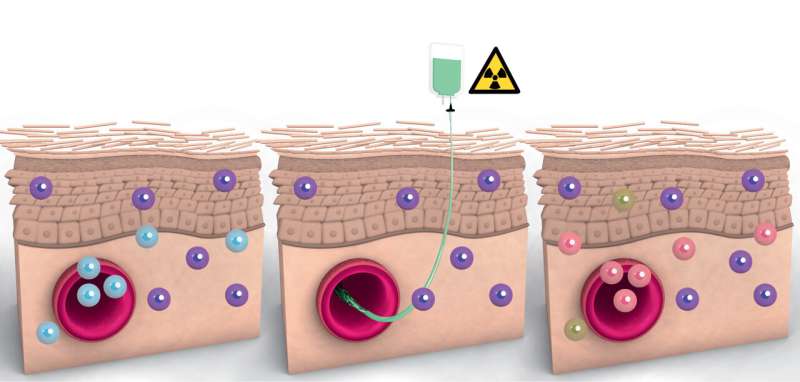
When pathogens enter the human body, a large number of immune cells are quickly on hand to recognize and destroy the invaders. Among them are T cells, a type of white blood cell that can directly recognize invaders such as viruses or bacteria.
However, new results indicate that the name “blood cells” for this group is somewhat misleading. “We were able to show that T cells sometimes remain in the skin for years and are thus optimally adapted to the local situation,” says Christina Zielinski.
Most T cells remain in the tissue
“It was long assumed that T cells circulate only briefly through the tissue, for example, to fight an infection, but do not linger there any longer, instead migrating directly back into the bloodstream,” Zielinski explains. However, her team’s results demonstrate that the majority of T cells remain in the tissue long term, with far fewer actually circulating the body. “This also suggests that blood samples might tell us very little about how good a person’s immune defenses are,” Zielinski says.
In order to track T cells in humans and find out which cell is where and how long it stays there, the team had to use a trick. “We studied samples from patients who had received allogeneic stem cell transplants,” Zielinski said. That means these patients had their own immune system destroyed by chemotherapy and radiation and it was then rebuilt with the help of blood stem cells from a donor. For some diseases, especially leukemia, this may be the only cure.
The researchers examined skin biopsies and blood samples taken two to three years after stem cell therapy. This allowed them to determine whether the T cells they found derived from patient or donor. “We determined the genetic fingerprint of individual cells for this purpose,” Zielinski explains. This enabled her to show that half of the T cells in the skin originated from the patients themselves, whereas in the blood T cells almost exclusively from the donors were found. Accordingly, the patient’s own immune cells survived for years in the skin tissue. However, only about a quarter of the recipients of stem cell therapy showed this profile; the immune system had been completely replaced in the remainder.
Possible consequences for transplants
“It is still unclear why some patients retain their own immune cells,” says Zielinski. She also says that more research is needed into what effects this has. She suspects that the resident T cells may have a protective function. “I think of it like squatting: The donor cells then can’t get into the tissue because that’s already occupied by the patient’s own T cells.” Therefore, they would not be able to cause inflammation. The resident T cells found, she said, were of an anti-inflammatory variety, supporting this thesis.
Her research group will now focus on the effects in liver transplants. Here, too, the question is whether T cells remaining in the tissue—in this case from the donor—could possibly protect the organ from rejection.
Insights into the immune system
Source: Read Full Article
